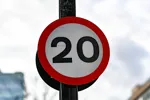Your vans may have anti-lock brakes to help keep them safe – but do your drivers know how to use them?
As more and more vans come equipped with anti-lock brakes, theoretically they should be safer vehicles.
But research from risk management firm Interactive Driving Systems suggests that many drivers don’t know how to usew them properly – and in such hands disastrous consequences could result.
Now safety specialist Dr Will Murray has put together a list of dos and don’ts which should help drivers understand how to use ABS to avoid crashes.
n Familiarise yourself with the brakes. Test drive the vehicle at a speed above which the ABS activates (usually above 10mph) in an unobstructed place such as a car park and apply the brakes firmly.
The anti-lock system should prevent the wheels from skidding. Pulsation may be felt in the brake pedal and you may hear a clicking sound. Avoid pumping the brake, even if the pedal is pulsating.
?
n Always make sure you drive carefully, keep a safe distance behind the vehicle in front, and maintain a speed consistent with the road conditions. Don’t rely on ABS to allow you to drive closer to other vehicles or to drive faster.
Assume that ABS equipped vehicles will take at least the same distance to stop as those which are not equipped with ABS. The big advantage is that the vehicle remains under control. It won’t skid and you can still steer it.
?
In an emergency, press the brake pedal as firmly as possible and, where appropriate, steer around obstructions. You should not pump your brakes if you have ABS. Pumping is for standard brakes – and completely robs ABS of its effectiveness.
Just ‘Stomp and Steer’ – hold your foot firmly on the pedal and remember that you can still steer because the ABS system will prevent the wheels from skidding.
?
When activated, the ABS causes the brake pedal to pulse noticeably – almost as if the brakes are pushing back.
Also, the valves in the ABS controller may make a noise that sounds like grinding or buzzing.
In some vehicles you may feel a slight vibration. This means the ABS is working. It is important NOT to take your foot off the brake pedal when you hear noise or feel pulsations, but continue to apply firm pressure.
As most drivers rarely or never brake hard enough to cause brake lock-up, and a significant number rarely bother to read their vehicle’s manual, this may not be discovered until an emergency.
KEEP YOUR FOOT HARD ON THE BRAKE PEDAL for as long as you need to avoid the obstacle.
No matter how hard you brake, ABS does not help you stop quicker under most conditions.
It helps you maintain steering control during braking so you can steer around obstacles.
Why? Because the wheels don’t skid, but continue to rotate.
This means that you can brake hard to avoid an obstacle and steer around it at the same time – adding to your chances of avoiding injury or death.
Remember, just STEER NORMALLY, even when braking hard in vehicles with ABS – but avoid steering towards oncoming traffic or so severely that your vehicle accidentally turns over!

















Login to comment
Comments
No comments have been made yet.